History of Kaluga
Foundation of Kaluga
According to archaeological research, the first settlements on the territory of present Kaluga arose about 7-9 thousand years ago. From the 7th century AD, the Slavs began to settle in the upper Oka River basin, assimilated the local population, and formed the Vyatichi tribal alliance engaged in arable farming and cattle breeding and actively traded with Mesopotamia and Persia.
The Vyatichi long fought for independence from Kievan Rus and resisted attempts at Christianization. The final conquest of the Vyatichi occurred only after the military campaigns of Vladimir Monomakh at the end of the 11th century. In the 12th century, this region became part of the Chernigov Principality.
Soon after the Mongol invasion of the 13th century, the Principality of Chernigov disintegrated. Since the mid-14th century, this territory became the object of struggle between the Moscow and Lithuanian princes. In 1371, Kaluga was first mentioned among several Lithiuanin border settlements captured by Moscow. From 1372, Kaluga became the possession of Moscow princes.
In 1480, in the immediate vicinity of Kaluga, events unfolded known as The Great Stand on the Ugra River. Ahmed Khan of the Great Horde embarked on a military campaign against Moscow because it refused to pay its tribute. Not daring to force the Oka River near Kolomna, the khan decided to make a roundabout maneuver and invade from the Lithuanian territory, across the Ugra River.
More historical facts…
To prevent this, Ivan III sent troops to Kaluga to protect the banks of the Ugra from invasion. In October, 1480, the khan’s troops were located on the right bank of the Ugra and the Russians were on the left bank. Ahmed’s troops made several attempts to cross the Ugra, but each time they were repulsed by the Moscow cavalry and infantry armed with firearms and cannons. In November, with the onset of cold weather, Ahmed retreated from the Moscow borders. These events put an end to the Mongol yoke over Russia.
Kaluga in the 16th-18th centuries
At the beginning of the 16th century, a line of defense of the southern borders of the Russian state passed through Kaluga. In this century, Kaluga also became a trading town famous for its developed crafts and icon painting art.
In 1619, according to the Russian-Polish truce, the border began to pass near Kaluga. For a while, it again became a border town. In the second decade of the 17th century, as a result of repeated invasions, Kaluga lost most of its population. The villages surrounding it were also abandoned.
In the middle of the 17th century, a new wooden kremlin (fortress) was built in Kaluga replacing the one burned down in 1622. The wooden Kaluga Kremlin, which had lost its significance after Ukraine joined Russia in 1654, burned down in 1700. In the second half of the 17th century, metal production began to develop in Kaluga. One of the first iron foundries in Russia appeared here.
In the 17th-18th centuries, Kaluga was developing as a major trading center on the Oka River. Local merchants traded in bread, hemp, hemp oil, honey, wax, and fish. In 1776, the population of Kaluga was about 17 thousand people. In 1777, the Kaluga Drama Theater was opened and the coat of arms of Kaluga was approved. The town was famous for its crafts made of wood, embroideries, and lace.
Kaluga in the 19th century
In 1812, Kaluga played an important role during the French invasion of Russia. It became the largest rear base of the Russian troops. In October 1812, with no supplies and shelter in burnt Moscow, Napoleon decided to retreat to Smolensk through Kaluga, where he hoped to seize large warehouses of food and fodder.
However, the Russian army blocked the approaches to the town. In the battle near Maloyaroslavets, the Russian army managed to stop the advance of the French troops and forced them to retreat along the already devastated Smolensk road. This accelerated the collapse of the French army.
In the 19th century, an economic decline began in Kaluga. It was caused mainly by two reasons: the shallowing of the Oka and the development of railway transport. By the end of the century, the Oka in the upper reaches ceased to be navigable and trade on it practically stopped. At the same time, the construction of railways led to the emergence of new trading centers with which Kaluga could no longer compete. In 1856, the population of Kaluga was about 31 thousand people.
By the middle of the 19th century, Kaluga turned into a quiet provincial town, which was used as a place of exile for high-ranking prisoners: the last Crimean khan Shahin Girai, the Kazakh khan Aryngazy Abulgaziev, the daughter of the Georgian king Tekla Iraklievna with her sons Vakhtang and Dmitry Orbeliani, and Shamil, the third imam of Chechnya and Dagestan, who surrendered to the Russian authorities after the defeat in the Caucasian war.
Kaluga in the 20th century
In 1914, the population of Kaluga was about 56 thousand people. During the First World War, the city was a large rear and military hospital center of the Russian Empire. After the Civil War ended, the Soviet government took a course towards the development of industrial cities, thanks to which a new stage began in the development of Kaluga. Most of the city’s enterprises worked for the Soviet defense industry.
From 1892 to 1935, the cosmonautics theorist and outstanding inventor Konstantin Tsiolkovsky lived and worked in Kaluga. In 1939, the population of the city was about 90 thousand people.
During the Second World War, the occupation of Kaluga by German troops lasted from October 12 to December 30, 1941. On July 5, 1944, Kaluga Oblast was formed and the city of Kaluga became its administrative center.
After the war, Kaluga developed as a large industrial, scientific, and cultural regional center of the Russian Soviet Federative Socialist Republic. In the 1950s-1960s, active housing construction was carried out. The city center was cleared of dilapidated houses, old streets were expanded and new streets were laid.
In 1967, the State Museum of the History of Cosmonautics was opened in Kaluga - the first in the world and the largest in Russia. It was created with the direct participation of Sergey Korolev, Yuri Gagarin and other cosmonauts of the USSR. In 1989, the population of Kaluga was about 312 thousand people.
In 2016, Kaluga was included in the famous tourist route known as the Golden Ring of Russia. Today, Kaluga is a city with a developed infrastructure, a large transport hub, one of the scientific, cultural, economic, and spiritual centers of the Central Federal District of Russia.
Pictures of Kaluga
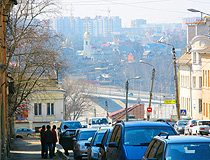
Kaluga cityscape
Author: Oleg Novikov
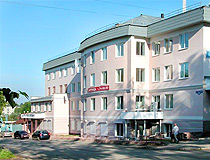
On the street in Kaluga
Author: R.Bobkov
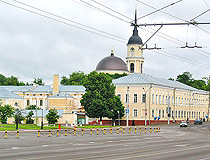
The Holy Trinity Cathedral in Kaluga
Author: Andrey Dmitriev
Kaluga - Features
There are a lot of versions about the origin of the name of Kaluga. The main version is that it was named after the Kaluzhka River flowing near the original settlement. The name of the river originates from the Russian words “kalyuzha”, “kalyuzhina” meaning “swamp”. The City Day of Kaluga is celebrated on the last Saturday of August.
The climate is temperate continental, winters are snowy and moderately cold, summers are warm and rainy. The average temperature in January is minus 8.6 degrees Celsius, in July - plus 17.7 degrees Celsius.
The city’s economy is based on the automotive industry, mechanical engineering and metalworking, food and light industry, electric power, building materials industry.
The airport of Kaluga offers regular flights to Moscow, St. Petersburg, Rostov-on-Don, Kaliningrad, Krasnodar, Sochi, Yekaterinburg, Kazan.
In the historic center of the city you can see numerous architectural monuments, which form unique ensembles. Kaluga has a lot of preserved churches of the 17th-18th centuries, noble mansions, former merchants’ houses converted into museums.
In one day, you can see almost all the main attractions. Travelers are attracted primarily by its provincial charm, wide streets, and picturesque views from the banks of the Oka River.
Kaluga is often called “the cradle of cosmonautics”, “the city of Tsiolkovsky.” Konstantin Tsiolkovsky, the great scientist and founder of theoretical cosmonautics, spent most of his life in Kaluga. His name is immortalized in the names of many urban sites.
In 2000, a motto tape “The Cradle of Cosmonautics” was added to the historical coat of arms of Kaluga with a stylized image of the first artificial Earth satellite.
Main Attractions of Kaluga
The Konstantin Tsiolkovsky State Museum of the History of Cosmonautics - the world’s first and largest space-themed museum in Russia. The unique expositions of this museum reveal the history of aeronautics, aviation, rocket and space technology. The scientific heritage of Konstantin Tsiolkovsky is also comprehensively presented here.
The expositions reflect the history of Russian cosmonautics from the first artificial Earth satellite to orbital stations. The museum has the most comprehensive systematic collection of museum items on astronautics in the country, most of which are unique. There is also a modern planetarium here. Akademika Koroleva Street, 2.
The House-Museum of Konstantin Tsiolkovsky. 29 years of Tsiolkovsky’s life were connected with this house located on the outskirts of Kaluga near the Oka River. Here he wrote dozens of important works on aeronautics, aviation, jet propulsion, astronautics, and other scientific problems. All rooms are restored in their original form. Most of the memorial exhibits are genuine, belonging to Tsiolkovsky himself or to members of his family.
Yuri Gagarin, who visited Kaluga shortly after returning from his historical flight to space, wrote the following in the Book of Honorary Visitors of the house-museum: “With great satisfaction and excitement I visited the house, where Konstantin Tsiolkovsky had lived and worked. I am happy that I was the first to fulfill Tsiolkovsky’s dream, to complete the work of many thousands of people, who were preparing the first manned flight into space.” Tsiolkovsky Street, 79.
The Rocket “Vostok” - a duplicate rocket (not a model) of the Gagarin’s “Vostok” rocket. In April 1961, this rocket was also on the launch pad at the Baikonur Cosmodrome. In case of failure, it would be the next rocket to be sent into space. Akademika Koroleva Street, 2.
Church of Cosmas and Damian (1794). The architecture of this baroque-style church stands out sharply from other Kaluga churches for its restraint, proportionality and grace. Its beautiful towers of an unusual round shape are very unusual and picturesque. Suvorova Street, 177.
Kaluga Museum of Fine Arts. The collection is located in the building of the city estate of the 19th century built in the Empire style - the best example of classical architecture in Kaluga. The department of old Russian art exhibits icons of the 16th-18th centuries, Russian wooden sculptures of the same period.
The collection of Russian art of the 16th-19th centuries presents paintings by A. K. Savrasov, I. I. Shishkin, V. D. Polenov, V. M. Vasnetsov, V. I. Surikov, I. I. Levitan, I. K. Aivazovsky, and other famous artists. Much attention is paid to local painters. The works of foreign artists created in Russia are separately exhibited. There is also a collection of Western European graphics here. Lenina Street, 104.
Gostinyy Dvor (1784-1823) - an architectural complex built in the classical style with decorative elements of old Russian architecture and occupying a whole block in the center of the city. In general, this bright red building is one of the most picturesque buildings in Kaluga and has the status of a monument of federal significance. Lenina Street, 105.
The Regional Museum of Local Lore of Kaluga - one of the oldest local history museums in Russia. The collection consists of a number of exhibitions: “Archeology”, “Wood”, “Documents and Rare Books”, “Precious Metals”, “Painting, Graphics, Sculpture”, “Ceramics, Glass”, “Metal” , “Numismatics”, “Scientific and Natural Collections”, “Weapons, Defensive Arms”, “Other” (household items of the 18th-20th centuries, various figurines of oriental origin, modifications of household appliances of the 20th century), “Fabrics”, “Philately”, “Entomology”, and others. Pushkina Street, 14.
“The House of Masters” - a museum of folk art located in a very picturesque house decorated with wood carvings of the mid-19th century, which is a monument of history and architecture, an object of cultural heritage of the peoples of Russia of federal significance. Grigorov Lane, 9.
The Central Park of Culture and Rest - one of the favorite places for walking and entertainment among residents and visitors of Kaluga located in the historic center of the city. In the central part of the park you can see the Holy Trinity Cathedral (1786-1818) in the architecture of which elements of Italian and Byzantine architecture are intertwined. The park has an observation deck with a magnificent view of the Oka River and the surrounding area. Staryy Torg Square, 4.
The Stone Bridge over the Berezuevsky Ravine - one of the most interesting architectural objects of Kaluga built in the style of Russian classicism in 1785, the oldest stone viaduct in Russia. This is an object of cultural heritage of the peoples of Russia of federal significance. Pushkin Street.
Stone Chambers of Korobov - one of the rare examples of “chamber architecture” of the late 17th century. The building was named after the first owner - Kaluga merchant Kirill Ivanovich Korobov. Today, it houses one of the expositions of the Kaluga Regional Museum of Local Lore. Plekhanova Street, 88.
Kirova Street - the central street of Kaluga with its main attractions and picturesque historical buildings. Today, former mansions are occupied by offices, shops, restaurants, and galleries.


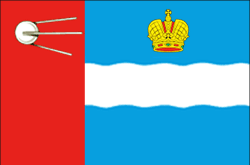
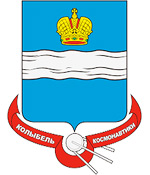
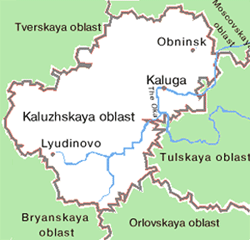



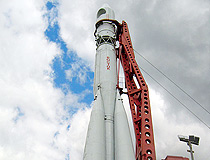
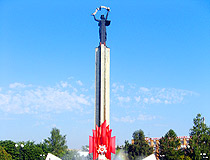

The comments of our visitors